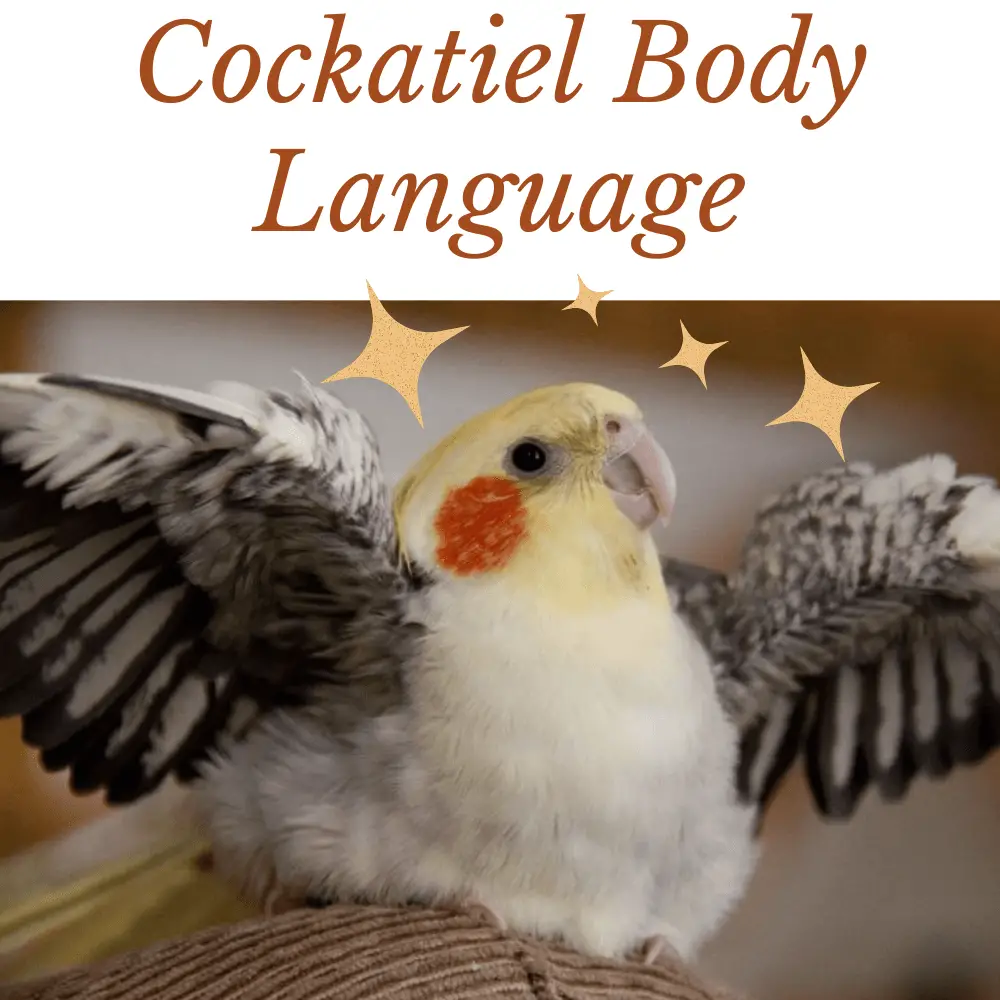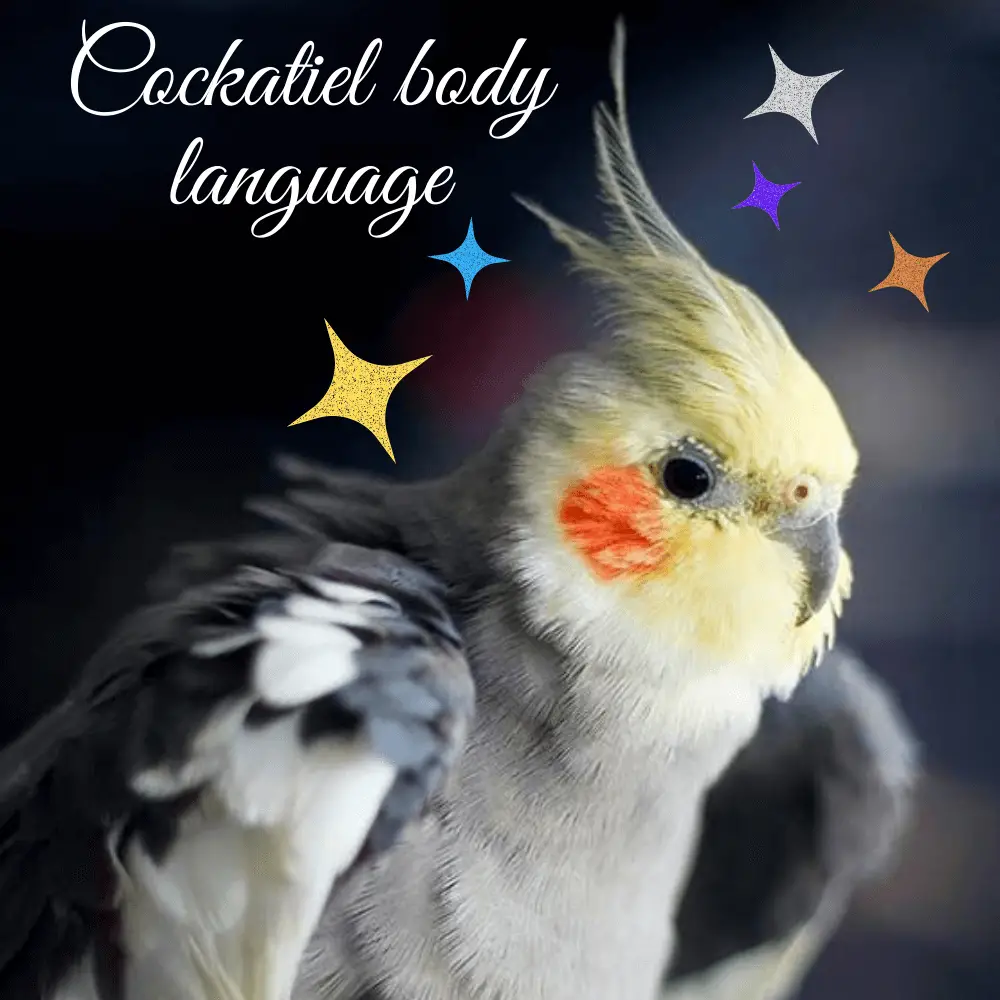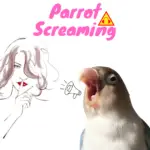
Cockatiel body language: Many good reasons can encourage you to adopt a cockatiel parakeet. Because this expressive and easy-going bird has many assets. Pet bird lovers appreciate it very much! By its cheerfulness and sociability, it represents a pet adapted for the whole family. In order to be able to understand and interact with it, it is useful to know the meaning of these attitudes. Learn how to understand the behavior of the cockatiel parakeet.
The character of the parakeet cockatiel
The elegant cockatiel (another name for the cockatiel parakeet) has a jovial and affectionate character. Tame cockatiels love contact with human beings and will gladly land on the shoulder of the person who takes care of them, to be cuddled! When they are in their cage, they will spend their time feeding, grooming, playing, and calling you…
His personality will suit both adults and children. Because it is both sweet and fun! It’s also a small show all by itself… You can take time to watch him go about his business in his cage, have fun on his swing …
Jardiland Tip: If you take a young parakeet raised by her parents (and not EAM, raised by hand), you will be responsible for her socialization within your home. Thus, involve several or all members of your family in its education, so that it does not focus only on you!
Want to know more? Discover our article on EAM parakeets.
The cockatiel parakeet is ingenious and demonstrative. Indeed, she expresses herself both orally and through her attitudes. By observing his behavior, you will be able to detect a number of his moods and feelings. One of the peculiarities of the elegant cockatiel is its hoopoe, which can give you information depending on its position.
Want to know more? Check out our article on the portrait of the cockatiel parakeet.
Cockatiel Body Language & Behaviour
Source:WarGamingParrot
His oral language
The cockatiel has a wide vocal range. She can be content to chirp, chat quietly, or on the contrary, make piercing screams. You should know that all these budgies will not necessarily have the same range of sounds. Indeed, the small bird adapts to its environment and the noises that are there. For example, if he is used to being in the presence of another bird or animal such as the dog and he hears it regularly, he can try to imitate it.
The male cockatiel (more than the female) is able to reproduce by whistling notes that you will teach him, small excerpts of songs, being patient, and repeating them to him regularly. In addition, whistling can be addressed to his favorite master or to his companion the female cockatiel. You should know that the elegant cockatiel is more skilled at whistling than at learning to speak. But you can still teach him to say a few words, always with patience…

A happy and well-feeling cockatiel parakeet will not tend to scream much. In order to prevent it from becoming too noisy, you can adopt at least two measures. The first is not to react to every call of your bird. Because he could link your coming to his cry, and thus repeat his calls as soon as he wants to see you, that is to say often!
On the other hand, if you only have one parakeet in her cage, she will be able to shout frequently because she is bored and demands your presence. This is why it is always advisable to adopt two cockatiel budgies at the same time. These birds have, in nature, a gregarious behavior. Tame cockatiels have kept this instinct and need company.
How to occupy a cockatiel parakeet?
Give your budgie(s) activities to do inside their cage. This involves placing various objects and toys that will arouse their interest and occupy them at certain times of the day, especially when you are not there. You will find in our store many games and toys to hang or arrange in the birdcage.
Jardiland tip: do not hesitate to bring toys in advance. Indeed, a cockatiel who loves a toy very much will end up damaging it with its beaks… which is a good sign because it means it’s a good occupation for her!
For example, you can hang a wooden toy, which will meet their desire to play! There are also wooden ladders or rings for swinging or resting.
You also have objects with different shapes on which the cockatiels will be able to perch and that will amuse them, such as the coconut ball toy or the Little Bermuda Pako toy, both are trapeze shaped.
Parakeets will also appreciate a climbing rope or knotted ropes.
The best is to have several toys and alternate them, so the animal does not get tired!
Even if the choice of toys is vast, be careful not to overload the inside of the cage as an object. Indeed, the elegant cockatiel must be able to continue to move easily and spread its wings. This is also why a cage as wide as possible (or an aviary) is recommended for the well-being of your feathered friends. Our stores offer cages and aviaries adapted to elegant cockatiels.
Jardiland Tip: Even if the cockatiel parakeet is happy with you and lives with a congener, it will remain quite noisy. So make the decision to adopt one with full knowledge of the facts, being sure that you will not disturb your neighbors for example. You can go to a pet store or a breeder to hear them and thus better understand the sounds they emit.

The body language of the cockatiel
If the cockatiel expresses herself a lot orally, she also does so with her attitudes. She will be able to tell you her mood, especially by the position of her hoopoe. Here are some examples of “translations” of his body language.
Positive feelings and well-being
Her hoopoe is erect and she makes small movements: she expresses curiosity, excitement and is attentive to her environment.
The feathers are swollen, the crest is relaxed: this is an attitude that precedes sleep, the parakeet is soothed. This is usually accompanied by the position on one leg, many birds sleep like this. You can also hear it squeaking slightly from the beak. When she sleeps, she can hide her head in her plumage.
Jardiland tip: never disturb any animal at nap time and also teach your children to respect the activity and rest phases of your pet birds.
She spreads her wings by lowering her head, hoopoes backward: the bird expresses his joy or affection towards you!
Do you see her smoothing her feathers? It’s time for the toilet! She will be able to precede this moment with a bath in her bathtub.
Negative feelings and fear
The feathers of its body are flattened, the hoopoe is bristly, the eyes are wide open: your parakeet feels a sense of fear, or it has been frightened or surprised (by a sudden noise for example).
She spreads her wings by blowing with her beak open, the crest lowered backward: the cockatiel feels in danger, she tries to impress by increasing the surface of her body. In this case, do not approach the hand as it may pinch, although this is rare.
Some unusual behaviors can be a sign of suffering, discomfort, or illness. For example, the cockatiel can tear off its feathers (this behavior is called pecking) abnormally. You can also see her apathetic, stay at the bottom of her cage and not move.
It can also be characterized by a loss of appetite. Constantly swollen plumage, combined with other symptoms, should alert you. In all these cases, contact your veterinarian.
Want to know more? Discover our article on how to take care of your parakeet.
In order to preserve wildlife, the animal you have just acquired must not be released into the wild.
Cockatiel body language chart





















